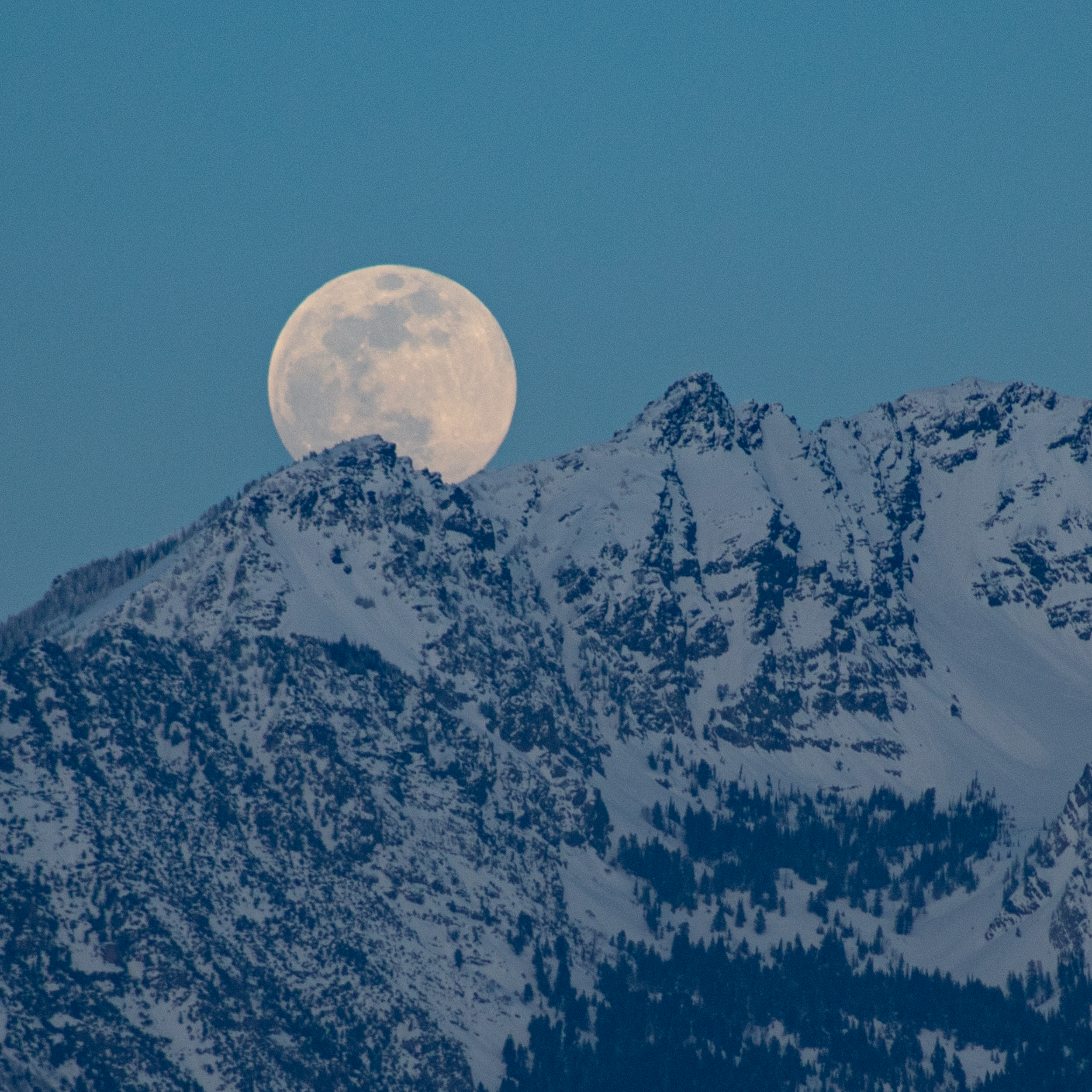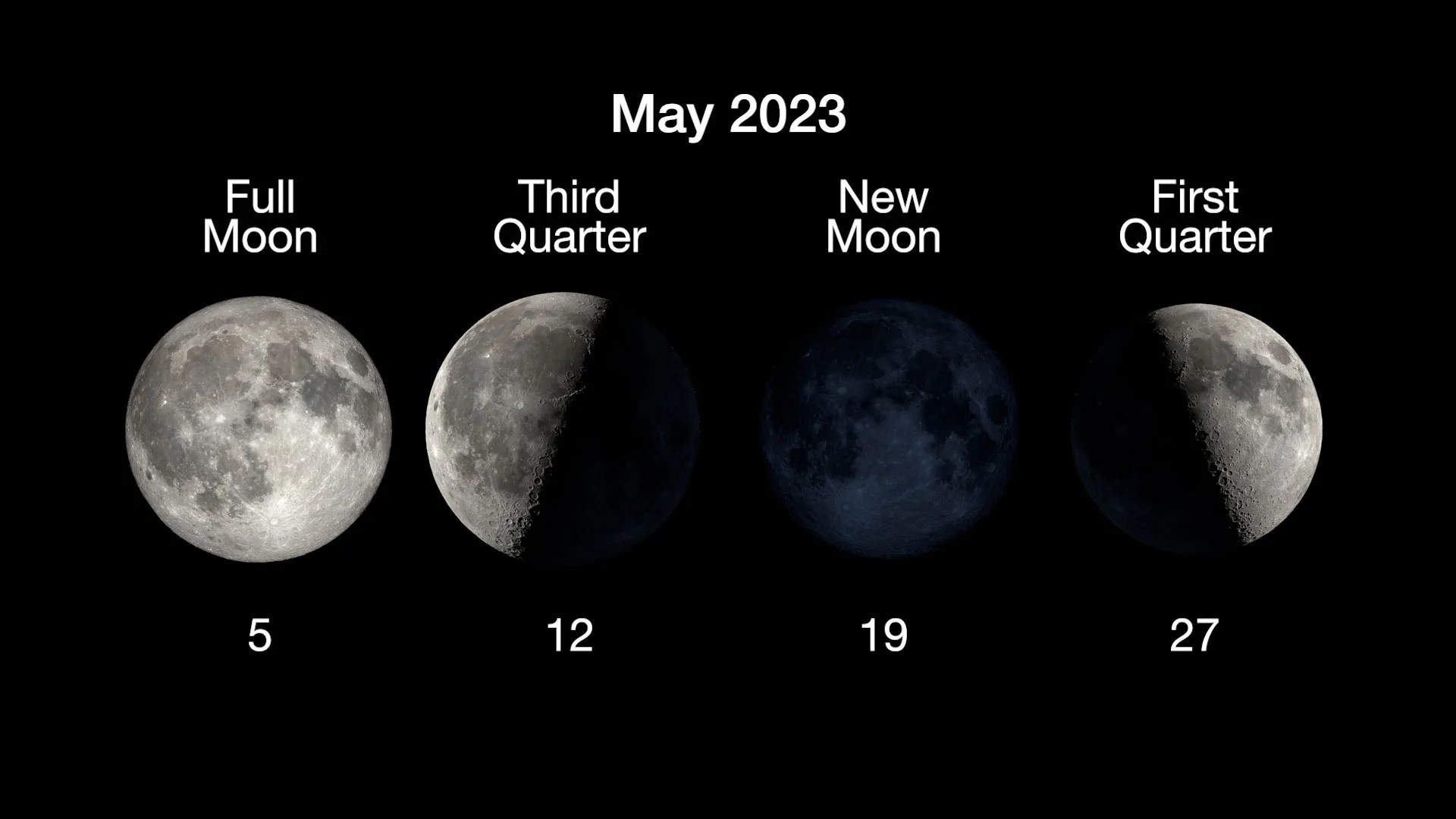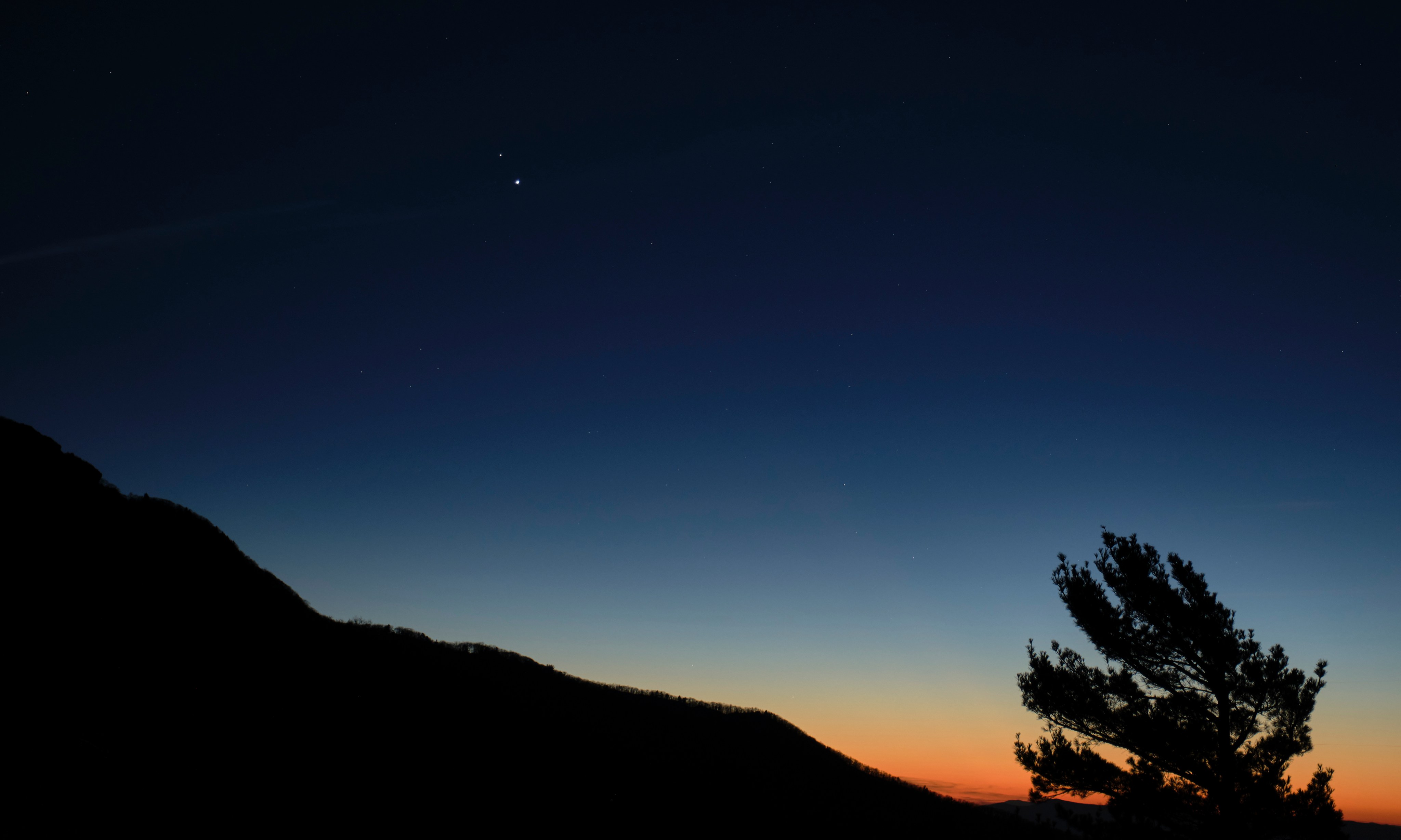Evening Sky Highlights
- On the evening of Thursday, May 23, 2024 (the evening of the day of the full Moon), as twilight ends (at 9:30 PM EDT), the rising Moon will be 4 degrees above the southeastern horizon with the bright star Antares just off the edge of the Moon. For parts of South and Central America, as well as the Caribbean and parts of the eastern USA (including Washington, DC), the Moon will be passing in front of Antares, blocking it from view. The bright object appearing closest to overhead will be Arcturus at 60 degrees above the east-southeastern horizon. Arcturus is the brightest star in the constellation Boötes the herdsman or plowman and is the 4th brightest star in our night sky. It is 36.7 light years from us. While it has about the same mass as our Sun, it is about 2.6 billion years older and has used up its core hydrogen, becoming a red giant 25 times the size and 170 times the brightness of our Sun.
- As this lunar cycle progresses the background of stars will appear to shift westward each evening (as the Earth moves around the Sun). The waxing Moon will pass by Pollux on June 8, Regulus on June 11, Spica on June 16, and Antares on June 19.
- By the evening of Friday, June 21 (the evening of the day of the full Moon after next), as twilight ends (at 9:49 PM EDT), the rising Moon will be 7 degrees above the southeastern horizon. The bright planets Venus and Mercury will not be above the horizon, with Venus setting 21 minutes and Mercury setting 43 minutes after sunset. Mercury may be visible from about 30 minutes after sunset until it sets 13 minutes later. The bright object appearing closest to overhead still will be Arcturus at 69 degrees above the south-southwestern horizon.
Morning Sky Highlights
- On the morning of Thursday, May 23, 2024 (the morning of the day of the full Moon), as twilight begins (at 4:40 AM EDT), the setting Moon will be 7 degrees above the southwestern horizon. The planet Mars will be 10 degrees above the eastern horizon and the planet Saturn will be 22 degrees above the east-southeastern horizon. Mercury will rise on the east-northeastern horizon 14 minutes after morning twilight begins. The bright object appearing closest to overhead will be the star Vega at 78 degrees above the western horizon, with Deneb a close second at 76.5 degrees above the northeastern horizon. Vega is the brightest star in the constellation Lyra the lyre and is one of the three bright stars in the "Summer Triangle" along with Deneb and Altair. Vega, the 5th brightest star in our night sky, is about 25 light-years from Earth, twice the mass of our Sun, and shines 40 times brighter than our Sun.
- As this lunar cycle progresses, Saturn and the background of stars will appear to shift westward each evening, while Mars will hover low on the eastern horizon, drifting slightly to the left. Mercury, rising after morning twilight begins, will also drift towards the left, moving closer each morning towards where the Sun is rising, making it more difficult to see as it shifts into the glow of dawn. The waning Moon will pass by Antares on May 24, Saturn on May 31, and Mars on June 2 and 3. On June 5, the thin, waning crescent Moon will appear near the Pleiades star cluster, with Jupiter and Mercury below. The Moon will rise 5 minutes after morning twilight begins. By the time Jupiter and Mercury rise, the sky will likely be too bright to see the Pleiades, and may be bright enough that you will need binoculars to see them (as well as a clear view of the east-northeastern horizon). After June 15 the bright planet Jupiter will join Mars and Saturn in the morning sky.
- By the morning of Friday, June 21 (the morning of the day of the full Moon after next), as twilight begins (at 4:31 AM EDT), the setting full Moon will be 2 degrees above the southwestern horizon. The brightest planet in the sky will be Jupiter at just 3 degrees above the east-northeastern horizon. The planet Mars will be 19 degrees above the eastern horizon and the planet Saturn (almost as bright as Mars) will be 37 degrees above the southeastern horizon. The bright object appearing closest to overhead will be the star Deneb at 80 degrees above the northwestern horizon. Deneb is the 19th brightest star in our night sky and is the brightest star in the constellation Cygnus the swan. Deneb is one of the three bright stars of the "Summer Triangle" (along with Vega and Altair). Deneb is about 20 times more massive than our Sun but has used up its hydrogen, becoming a blue-white supergiant about 200 times the diameter of the Sun. If Deneb were where our Sun is, it would extend to about the orbit of the Earth. Deneb is about 2,600 light years from us.
Past Guides
An archive of retired NASA executive Gordon Johnston's monthly skywatching column.

The Next Full Moon is the Flower, Corn, or Corn Planting Moon
19 min read
The Next Full Moon is the Flower, Corn, or Corn Planting Moon; the Milk Moon; the Hare’s Moon; and Vesak, Buddha Jayanti, or Buddha Purnima. The next full Moon will be on Thursday morning, May 23, 2024, at 9:53 AM…
Article1 day ago

March-April 2024: The Next Full Moon is the Crow, Crust, Sap, Sugar, or Worm Moon
29 min read
The next full moon is the Crow, Crust, Sap, Sugar, or Worm Moon; the Paschal Moon; Purim; the Holi Festival Moon; Madin Poya; the Pothole Moon; a Micromoon, and a Partial Lunar Eclipse.
Article2 months ago

The Next Full Moon is the Flower, Corn, or Corn Planting Moon
17 min read
The next full Moon will be on Friday afternoon, May 5, 2023. The Moon will appear full from early Thursday morning through early Sunday morning.
Article1 year ago

